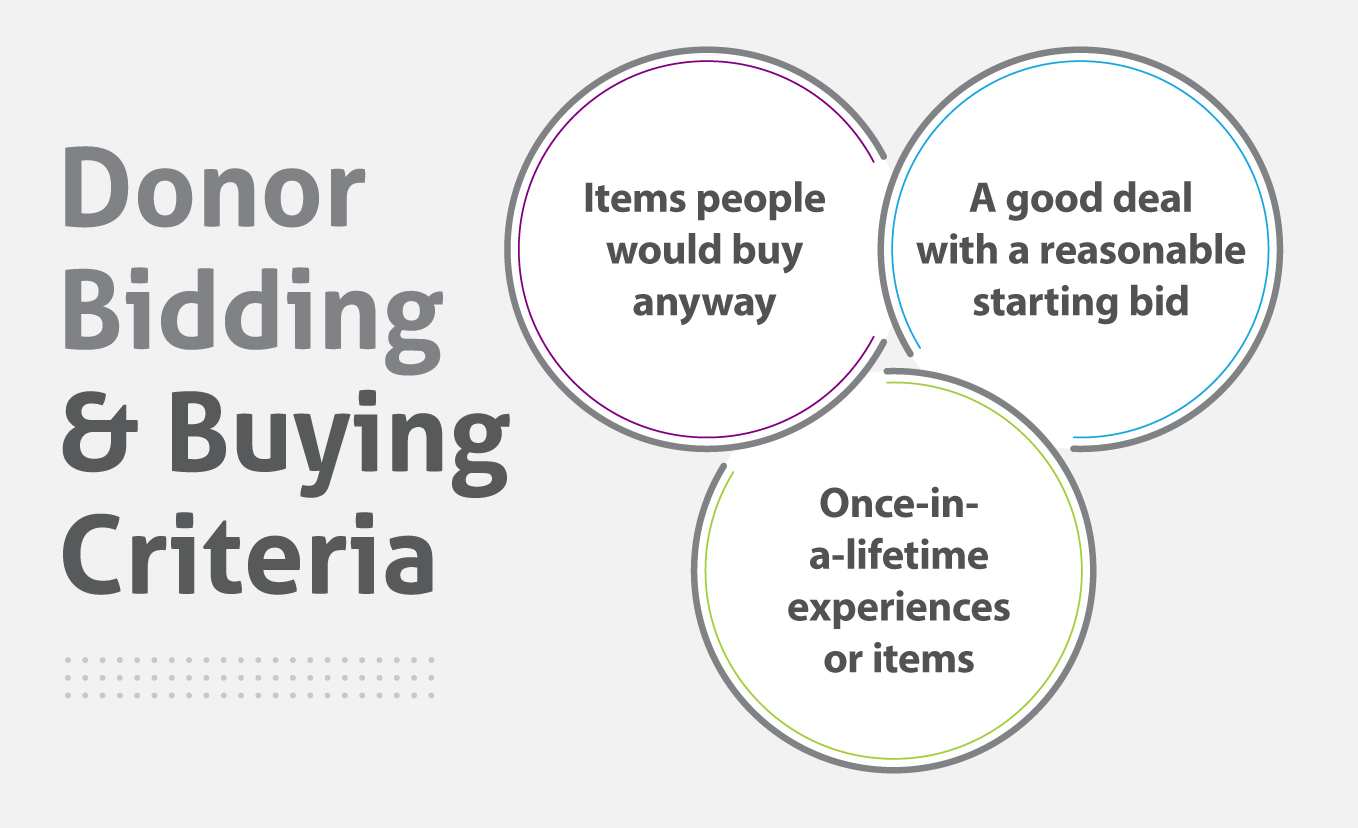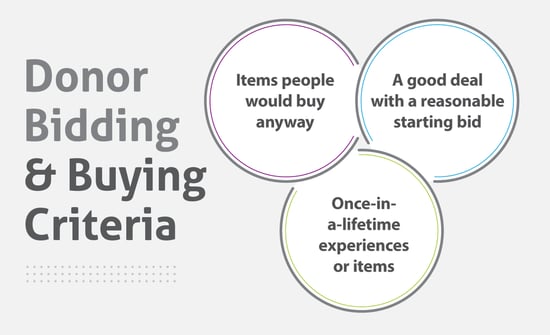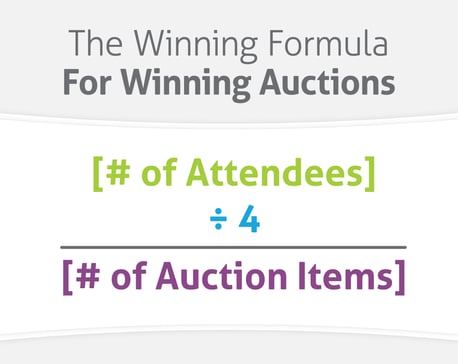
There’s a time and place to adopt the motto, No risk, no reward—like entering a pie-baking contest even though you’ve never baked anything but store-bought cookie dough. Worst-case scenario: You’re out $30 worth of ingredients, a $20 entry fee, and you come in last while trying to win the first-place prize.
But a better motto when it comes to planning charity events for your cause: No risk, no worries. Event planning consists of lots of moving pieces, and you want to minimize risk wherever and whenever possible to ensure that 1) your supporters have a great giving experience, and 2) you reach (and ideally, exceed!) your fundraising goals.
As a fundraising software provider that helps tens of thousands of organizations advance important, life-changing causes through supporter engagement, we’re always on the lookout for ways to remove barriers to fundraising success that are easy while creating enjoyable experiences for your supporters and team alike. (For real: We only win when our partners win, so we love making great fundraising even better!)
Introducing an Auction-Boosting Feature to Our Arsenal of Fundraising Tools
We all know that vetting auction item vendors is hard. That’s why we’re excited to announce the re-launch of our Consignment Marketplace.
We recently sat down with RiskFreeItemShop CEO and Cofounder Tricia Roseveare learn how how to:
- Craft more compelling auctions that will leave a lasting impression
- Master item selection for maximum impact (without overwhelming your supporters)
- Choose items that speak to your donors, instantly
- Think outside of a single event with new ideas for risk-free fundraising campaigns that are perfect to add to your schedule all year long
- Strategically price for success and set opening bids that lead to skyrocketing contributions
How Do Risk-Free Items Boost Auction Events?
When nonprofits use FrontStream for their digital auction and fundraising needs, they automatically gain access to the partner marketplace where they can present their donors a curated, best-selling collection of risk-free vacations, experiences, jewelry, and memorabilia to turbo-boost revenue at events.
Including these items doesn’t involve any upfront payment or credit card requirement; nonprofits are only billed the charity cost for what sells at their event and keep the profit.
What makes risk-free items even more convenient:
- You instantly secure your chosen items the moment you checkout—there’s no waiting
- You can add items to your auction as close as a few hours before your event
No risk, no worries.
💡 Organizations that use risk-free items tend to raise 20% more at their auction fundraising events.
Top 11 Auction Selection Secrets
Besides understanding ways to harness the power of no-risk items, we have nearly a dozen other hard-to-find insights that get into the nitty gritty of planning successful auctions to share with you!
Up Urgency to Drive Interest
Great auctions tap into the human desire to compete. Everyone loves a little friendly competition, and we all like to win—especially if winning helps a great cause.
But how do you activate the competitive spirit that leads to you raising more at your auctions?
First and foremost, you need to structure your event to encourage FOMO (Fear of Missing Out). FOMO drives us to want to participate, to show up.
Tips to ignite FOMO and drive interest in your auction:
- Host your online silent auction and live auction in the span of a week. If you’re silent auction goes on for too long, it will kill you chances of building FOMO and urgency among supporters.
- Make your items seem just as special as your guests by releasing items slowly throughout the week. This encourages supporters to excitedly keep coming back to your auction page to see what’s new to bid on.
- Post a link to your auction page on social media saying something like, “Check out our initial release of items for our upcoming auction! Keep an eye out, as we’re going to release even more incredible pieces throughout the week!” (And with our “Smart Categories” feature, we automagically highlight the new items on your event website.)
- Offer incentives or “limited perks” to get people registered and bidding ahead of time. People like feeling special, and we all enjoy free stuff!
- Plus, these perks don’t have to cost you anything: Consider offering to enter names in a drawing for primo parking spots or a seat at a VIP table to the first [specific number of] supporters who register for the event early, for example.
Use the Bidding & Buying Criteria Trifecta to Engage Every Supporter
A huge part of selecting the right auction items is understanding the auction-participant mindset—it’s important to know as your initial auction building blocks.
But what are they interested in winning, and why?
There's a basic Donor Bidding & Buying Criteria that’s easy to follow, and you should aim to choose a mix of these three types of items:

- Items people would buy anyway. Some auction participants go in looking for something they were already planning to buy because they would rather buy the item while giving to your cause. Think: A year’s supply of diapers or gas and annual family vacations to Disney or Cancun.
- A good deal with a reasonable starting bid. A great deal is hard to resist and easy to grow attached to even when the bidding price starts creeping up. Weekend golf outings, lake house getaways, and a hot tub (installation included) work well here.
- A once-in-a-lifetime experience or item they wouldn’t have access to anywhere else, like an all-inclusive trip to a villa in the French countryside or an autographed Taylor Swift guitar.
A lot of supporters come in with all three in mind. Some come in with one or two. But at the end of the day, everyone browses all items regardless of their original mindset.
When you include a mix of items that hit all three, you reach a trifecta that guarantees more bids, higher bids. Not only that—by following this three-pronged approach, you show that your organization is in tune with its supporters and so you may also generate more interest for your future auctions.
Master the Donor Bidding & Buying Criteria Trifecta
There are two main ways you usually collect items for an auction:
- Ask for donations from other people or companies
- Choose risk-free items from a consignment market
Honestly, it’s usually a mix of those two options. Your typical donated items—gift cards, gift baskets, a weekend stay at a supporter’s lake house—are often what people and businesses donate directly, which is great for price-setting and reaching fundraising goals. And although you can get them by contacting people and businesses in your community or by sending donation requests to our database of 300+ charity-minded businesses (also included in FrontStream).
Risk-free consignment shops are especially useful for getting your hands on the more exclusive, rare, once-in-a-lifetime items that generate revenue-raising bidding wars.
Find the Ideal Formula for Your Winning Auction
Now that you know the Donor Bidding & Buying Criteria, the next logical questions are:
How many items should we have at our silent auction?

So, say you’re expecting 100—your formula would look like:
100 ÷ 4 = 25 (approximately 25 – 30 items)
If you know the number of event attendees who plan to participate at the auction based on past reporting that you pull up in your auction management software, you can get a little more specific here. (If you expect 60% of 100 attendees to participate, you will divide by 3 to reach the number of silent auction items; if you expect 40% of 100 attendees to participate, you’ll divide by 5 to reach the number of items to showcase at your silent auction.)
It’s all about hitting the sweet spot. Too few items, and you won’t drum up enough excitement, and you risk leaving supporters disappointed. Too many items, and you might overwhelm supporters.
💡 For live auctions at live events, it’s a safe bet to feature 8 – 12 auction items, regardless of your number of guests.
What’s the right number of items for a charity auction?
Most of your auction items should come from in-kind donations; these gift card gift basket, yoga classes, in-home painting parties, and weekend getaway donations should make up the base of your auction.
The next tier of items should consist of specially donated items that mostly fall into the I was looking to buy, anyway category. They often come from the community and local and national businesses (although risk-free consignment shops are another easy way to secure them) and are interesting and more accessible to everybody. Trips to Disney or Cancun and designer handbags or jewelry exist in this middle tier.
The top tier should consist of a couple exclusive, specialty items that are too dreamy for a lot of supporters to pass up. Experiences like a family trip to that French villa I mentioned earlier or a chance to drive a NASCAR vehicle fit nicely in this tier.
The great thing about this top tier: Even if people aren’t personally interested in the items, they’re unique enough to foster word-of-mouth and an overall positively engaging halo around all the rest of your offerings!
So, if we take the example formula from above that calculates about 25 silent auction items per 100 fundraising event guests, this tiered item system roughly breaks down to:
- 12 – 17 in-kind donation items
- 5 – 10 I was going to buy anyway items
- 3 uber-rare, unforgettable items
The One Exception to the Ideal Auction Formula: Themed Auctions
Themed auctions are great for targeting specific sub-sects of your donor base to raise more funds throughout the year. In this case, you don’t need to throw together a robust auction catalogue that appeals to everyone in your donor base, and access to no-risk consignment items makes it easier than ever to run short, virtual auction events throughout the year that’ll help boost your annual fundraising goals.
A few examples:
- Run a Mothers’ Day auction in May consisting of high-end, no-risk jewelry, boutique chocolates, yoga classes, and spa vacations
- Host a Fathers’ Day auction in June with top-of-the-line grills, camping supplies, golf outings, and designer colognes
- Create an auction for National Foreign Language Month with a few overseas vacation items. (Five nights in Rome or Paris, anyone?)
Price Your Starting Bids Wisely
The classic Opening Bid Pricing Conundrum:
- Chances that you’ll raise more than an item’s value grow slimmer the lower you price its opening bid. Pricing too low also can diminish its perceived value so that people are less interested in bidding on it altogether. (Also, people who donate items want you to maximize their potential!)
- However, an item may look less appealing to many supporters if you start an opening bid too high
A few safe “rules of thumb” to follow:
- When you price donated items, you have the flexibility to go “low” to try fostering a full-out bidding war (50% – 80% of the item value)
- When pricing a consignment item, your opening bid needs to...
-
- 1) Cover the value/cost
- 2) Bake in the profit (we recommend starting +20% of YOUR COST)
💡 It’s best practice to mention the brands of donated items as well as the person or company who donated the item.
Know Your Audience
It’s important to know the demographics of your audience before selecting auction items.
It goes without saying, but different people have different ideas for what ideal auction items are. An 80-year-old gardener from Seattle, Washington might dream of a different once-in-a-lifetime experience than a 35-year-old lawyer from Tampa, Florida.
Say your fundraising totals are declining year after year at an annual event—or your auctions aren’t bringing in as much funds as they should—there’s a good chance it’s time to check in with your donor base to see if there are trends in shifting demographics or overall interests. For example: If you notice more single women from urban areas engaging with and donating to your cause, you’ll want to consider them when selecting items for an upcoming auction (houseplants instead of pool supplies, etc.).
A simple place to start: Collect information about your current donor base by sending out basic surveys or polls asking them about their interests and opinions. This gives you a valuable touchpoint with your donors, shows them you value their opinions, and above all, helps you tailor your auction events to bring in more revenue.
But the absolute best way to know your audience is to invest in a comprehensive donor management system that’s easy to use, collects all the right donor data, and seamlessly integrates into your auction and other fundraising tools. For this, a simple Excel spreadsheet that requires constant, tedious importing and exporting (and doesn’t secure your donor’s sensitive data) just doesn’t cut it.
Once you get to know your support system on a deeper level, it creates a trickle effect, becomes a well-oiled machine that makes every corner of your fundraising grow to new heights and fully blossom.
Create Winning Auction Fundraisers with FrontStream
Our auction management software provides you with everything you need to set up an unlimited number of auctions as part of other fundraising events or as solo campaigns. One of our most unique features: Access to our BiddingForGood community of over 4.4 MILLION philanthropic shoppers:
- 35% of bidders per auction come from the BiddingForGood community
- 25% of winning bids come from the BiddingForGood community
- The BiddingForGood community has already raised over $600M for great causes
Schedule a demo today to see these auction secrets in action and to learn more about risk-free items + how you can tap into the BiddingForGood community to reach new supporters and raise more funds.

Simplify Fundraising
Over 31,000 nonprofits & schools have trusted FrontStream to simplify their charity auctions, galas, peer-to-peer events, and online fundraisers.




